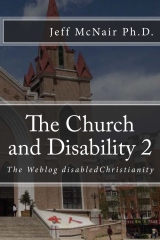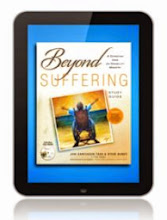I finally had the opportunity to view the movie Crash, recent winner of the Academy Award for best picture. I found the film very thought provoking on a variety of fronts, however, one scene in particular struck me.
Throughout the film, you get to know a character who is an reflective/thoughtful African-American man who is the brother of a city lawyer and a car thief. You also learn that he does 3 things which the film portrays as uncharacteristic of a black man 1) he loves hockey, 2) he has a developing interest in country music, and 3) either he is Catholic, or simply has an interest because he carries around a St. Christopher statue that he puts on the dashboard after he steals cars. Anyway, in the scene which interested me, an off duty white police officer, a young idealist who has recently raised complaints about racism on the LA police force, picks up the car thief who is hitch hiking. In the course of the conversation, the black guy mentions that he was in the area of the town ice skating because he had always wanted to be a goalie. The white idealist doesn't believe him. The black man says he is developing an interest in country music which once again the white guy doesn't believe. Then the black guy looks up at the dashboard, and there is the same statue that he always carries around. He just starts laughing. The white guy gets angry and tells him to get out of the car, he thinks he is being mocked as no black man, likes country music and wants to be a hockey goalie. The black guy says to hold on as he reaches into his pocket to get the statue that he always carries of St. Christopher. At that point, the white guys tells him to keep his hands where they can be seen, but he keeps digging in his pocket to get the statue. As he pulls it out of his pocket the white guy shoots and ultimately kills him. The statue falls out of the black guy's hand.
As an observer, you sit there stunned. How could this happen? The complete disconnection between two people is perfectly illustrated. It is as if each of them approached the other through the socially constructed stereotypes they had been socialized to believe and when the black man in particular, did not meet the stereotypes of the white man we end up on very uncomfortable ground, where we don't know how to act or relate. In spite of the evidence otherwise, we act on our stereotypes. In the off duty cop's mind, the black man was obviously in the area of town, not to ice skate, but to rob or be involved in some sort of criminal activity.
How do we see persons with disabilities? What stereotypes to we bring to our interactions with them? What do we do when they do not meet the stereotypes we have for them? For those of us who are working to change the Church, what negative stereotypes do churches and those in leadership bring which result in the demise of those they would claim to help. In reality, the white cop was apalled at racism when he saw it. In the same way, the Church speaks of all people being equal and loved by God. But ultimately, when confronted with a real person, the white cop's racism came through as well. He wasn't specifically harassing people, and was even trying to help people who had been victims of racism (another of the movie's powerful scenes). But inside, he was capable of killing another person largely on the basis of his racist stereotypes which were just below the surface. The church also has discriminatory stereotypes, particularly about people with disabilities, which are "killing" people through their exclusion.
In the same manner that Crash expertly puts the finger on racism and race relations, we must do the same with discrimination against persons with disability where ever it might appear, but particularly within the Church.
McNair (fcbu)
Monday, April 03, 2006
Subscribe to:
Post Comments (Atom)











2 comments:
Professor,
You make a strong and effective anology to illuminate your point. Furthermore, the use of a comtempary cinema story dealing with real and relevant issues helps to make your position that much more relatable to our own lives. I saw this movie and I agree it is a very compelling piece of art. My 18 year old nephew saw the movie before I did and he didn't like it. I concluded that either he didn't really understand the story or simply doesn't want to accept the fact that discrimation and stereotypes are still a prevelant part of our society. As a black male, I found the issues in movie stimulated my thought about how I may at times percieve people of other races based stereotypes rather than on imperical data. It's a trap that is very easy to fall into. I have learned through some of my observations that nothing beats finding out things for yourself by getting know people through contact. That is the only way to finding out the truth of who someone is--perhaps, even finding out who I really am.
I tutor students with a variety of disabilities, academic strengths and weaknesses every day. During our summer school program last summer I had a group of students entering 5-9th grade. It wasn't until late in the summer that a student's mother let us know her son had been diagnosed with a mild form of Autism. It was like a light was turned on for me. His interactions with me, the questions that he would ask(sometimes again and again), and the way he would relate to other students became much easier to understand. With that knowledge, we were able to make the necessary accomodations for him, so he would not fall behind in our activities (he had a lot of difficulty with the creative assignments). I relate this to the scene in the car in "Crash" in that we had notions of who this student was, misinterpretted or just ignored his behavior, but were fortunate enough to receive the important information that allowed us to change our perception of and relationship with him, hopefully without causing harm. It is truly frustrating to work with students without key pieces of information like that.It has taught me to be careful about forming assumptions about students, diagnosed disabilities or not.
Post a Comment